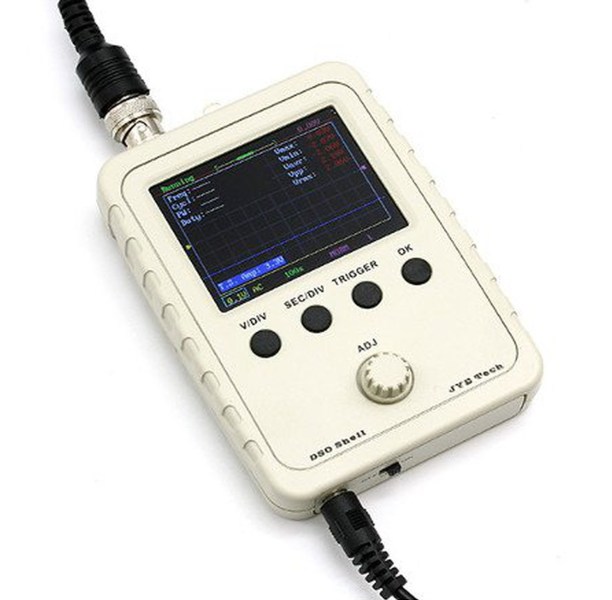If you experiment with electronics whatsoever, a multimeter is pretty much the minimum you’ll need instrument-wise. This, however, only tells you some of the stories. Sure, you’re reading 5 volts, but how steady is that reading? To really tell what’s going on, you’ll need an oscilloscope.
Fortunately, with advances in microelectronics, basic oscilloscopes no longer have to be large instruments that cost in the high hundreds or thousands of dollars but can now be made small enough to slip into your pocket for around $100. While they may not replace professional equipment, for quick reference they can be quite useful.
If you’d rather spend even less money—but more time—then there are DIY kits that cost even less. One example is the DSO Shell Oscilloscope kit, listed for around $35. The device features a 12-bit sampling resolution and a maximum bandwidth of 200KHz. It also has a rotary encoder for adjustments, and as the name implies, a nice housing to protect the instrument’s insides.
If you’ve never had an oscilloscope, the big question is whether a cheap unit like this is worth it, or should you pay a lot more for something more capable? If that sounds like you, then this review on Hackaday would be a great resource. On a related note, this article from Adafruit goes over why the frequency of a scope matters, which can be a major limitation in cheaper options like this.
Read More: DIY Oscilloscope Won’t Break the Bank

